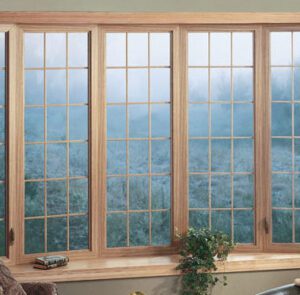
From Start to Finish: What to Expect During Your Window Replacement Project
Replacing your home’s windows is a significant investment that can enhance both the aesthetic appeal and energy efficiency of your property. However, the process can seem daunting if you’ve never undergone a window replacement project before. This comprehensive guide will walk you through what to expect at each stage of your window replacement project, from initial planning to the final installation and cleanup.
Assessing the Need for Replacement
Signs You Need New Windows
Before embarking on a window replacement project, it’s essential to determine whether your current windows need replacing. Here are some common signs that it’s time for new windows:
- Drafts: If you feel a draft even when your windows are closed, it’s a sign that your windows are no longer sealing properly.
- Condensation: Persistent condensation or frost between the panes of glass indicates a broken seal and reduced efficiency.
- Difficulty Operating: Windows that are hard to open, close, or lock can compromise security and functionality.
- Visible Damage: Cracks, warping, or rot in the window frames are clear indicators that replacement is necessary.
- Noise: Increased external noise can signal poor insulation, which new windows can improve.
Planning and Budgeting
Setting a Budget
The first step in your window replacement project is setting a budget. Consider the following cost factors:
- Window Material: Wood, vinyl, aluminum, and fiberglass each have different price points and maintenance requirements.
- Window Type: Double-hung, casement, bay, and specialty windows vary in cost.
- Energy Efficiency: Investing in energy-efficient windows with features like Low-E coatings and gas fills can reduce long-term energy costs but may have a higher upfront cost.
- Installation: Professional installation ensures proper fit and performance but adds to the total expense.

Researching Window Options
Take time to research the various window options available. Consider factors like durability, maintenance, aesthetic appeal, and energy efficiency. Visiting showrooms and consulting with window specialists can help you make informed decisions.
Getting Quotes
Request quotes from multiple window replacement companies to compare prices and services. Ensure each quote includes a breakdown of costs, including materials, labor, and any additional services like cleanup and disposal of old windows.
Choosing a Contractor
Evaluating Contractors
Choosing the right contractor is crucial for a successful window replacement project. Here’s what to look for:
- Experience: Opt for contractors with extensive experience in window installation.
- Licensing and Insurance: Ensure the contractor is licensed and insured to protect against potential liabilities.
- References and Reviews: Check references and read online reviews to gauge customer satisfaction and the quality of work.
- Warranty: A good contractor should offer a warranty on both the windows and the installation.
Signing the Contract
Once you’ve selected a contractor, you’ll sign a contract outlining the scope of work, timeline, payment schedule, and warranty details. Review the contract carefully to ensure all aspects of the project are covered.
Preparing for Installation
Scheduling the Installation
Work with your contractor to schedule the installation at a convenient time. Consider the weather and your personal schedule, as window replacement can be disruptive.
Preparing Your Home
Proper preparation can help the installation process go smoothly:
- Clear the Area: Remove any furniture, curtains, blinds, and decorations near the windows.
- Protect Belongings: Cover nearby furniture and floors with drop cloths to protect them from dust and debris.
- Access: Ensure installers have clear access to the windows, both inside and outside your home.
- Pets and Children: Make arrangements for pets and children to be safely out of the way during the installation process.

Inspection and Measurement
Before installation day, your contractor will likely conduct a final inspection and precise measurements to ensure the new windows will fit perfectly.
The Installation Process
Removal of Old Windows
On the day of installation, the crew will start by removing the old windows. This process involves:
- Careful Removal: The installers will carefully remove the old windows to avoid damaging the surrounding structures.
- Disposal: The old windows and debris will be disposed of, either by the crew or through a designated service.
Installation of New Windows
The actual installation of new windows includes several steps:
- Preparation: The window openings will be cleaned and prepped to ensure a proper fit.
- Installation: The new windows will be fitted into the openings, ensuring they are level and secure.
- Insulation: Insulation will be added around the frames to improve energy efficiency and seal any gaps.
- Sealing: The windows will be sealed with caulk to prevent drafts and moisture infiltration.
Quality Check
After the installation, the crew will conduct a thorough quality check to ensure the windows operate smoothly and are properly sealed. They will also verify that the windows meet all manufacturer specifications and performance standards.
Post-Installation Steps
Final Walkthrough
Once the installation is complete, your contractor will conduct a final walkthrough with you. This is your opportunity to inspect the work and ask any questions. Make sure to:
- Test Functionality: Open and close each window to ensure they operate correctly.
- Check Seals: Inspect the caulking and insulation around the windows for a proper seal.
- Review Cleanup: Ensure the crew has cleaned up the work area and disposed of old windows and debris.

Warranty and Maintenance Information
Your contractor should provide you with warranty information for both the windows and the installation. They should also offer guidance on how to maintain your new windows to ensure they last for many years.
Enjoying Your New Windows
With your new windows installed, you can start enjoying the benefits immediately. Improved energy efficiency, enhanced curb appeal, and increased home comfort are just a few of the advantages you’ll experience.
A window replacement project is a significant undertaking that requires careful planning and execution. By understanding the process from start to finish, you can ensure a smooth and successful installation. From assessing the need for new windows and setting a budget to choosing the right contractor and preparing your home, each step is crucial to achieving the best results. With new, high-quality windows installed, you’ll enjoy improved energy efficiency, enhanced aesthetic appeal, and increased home value for years to come.
Considering the Cost of Window Replacement
When planning a window replacement project, understanding the actual costs involved is crucial. The cost of replacement windows can vary significantly based on several factors, including the type of window, materials used, installation complexity, and additional features. This section will break down the costs associated with window replacement to help you budget effectively.
Types of Replacement Windows and Their Costs
Different types of windows come with varying price tags. Here’s an overview of common window types and their average costs:
Single-Hung Windows
- Description: Single-hung windows have a fixed upper sash and a movable lower sash.
- Cost Range: $200 – $500 per window
- Installation Cost: $100 – $250 per window
Double-Hung Windows
- Description: Double-hung windows feature two movable sashes, allowing for better ventilation.
- Cost Range: $300 – $700 per window
- Installation Cost: $150 – $300 per window
Casement Windows
- Description: Casement windows are hinged on one side and open outward with a crank.
- Cost Range: $400 – $800 per window
- Installation Cost: $200 – $400 per window
Sliding Windows
- Description: Sliding windows open horizontally by sliding along a track.
- Cost Range: $300 – $600 per window
- Installation Cost: $150 – $300 per window

Bay and Bow Windows
- Description: Bay windows project outward from the house, creating a nook inside, while bow windows consist of four or more windows forming a gentle curve.
- Cost Range: $1,200 – $3,000 per window
- Installation Cost: $300 – $800 per window
Picture Windows
- Description: Picture windows are large, fixed windows that do not open, often used to frame a view.
- Cost Range: $300 – $800 per window
- Installation Cost: $150 – $300 per window
Installation Costs
The cost of installing replacement windows can vary widely based on several factors, including the complexity of the installation, the condition of the existing window frames, and the labor rates in your area. Let’s explore the various aspects that influence these costs.
Standard Installation
Standard installation involves removing old windows and fitting new ones into the existing openings. This process typically includes ensuring that the new windows are level and secure, adding insulation around the frames to improve energy efficiency, and sealing the windows with caulk to prevent drafts and moisture infiltration. The cost for standard installation generally ranges from $100 to $300 per window. This cost can vary depending on the size of the window, the ease of access to the window, and the region you live in.
Custom Installation
Custom installation is required for non-standard window sizes or shapes, intricate designs, or when the window openings need resizing. This type of installation is more labor-intensive and requires a higher level of skill, which is reflected in the higher cost. Custom installations typically range from $200 to $500 per window. Additionally, if the new windows have special features, such as bay or bow windows that project outward from the house, the installation process becomes more complex and expensive.

Structural Modifications
In some cases, installing new windows may require structural modifications to the existing window openings. This can include resizing the openings to fit new window dimensions, reinforcing the surrounding structures to support heavier windows, or repairing any damage found during the removal of old windows. Structural modifications add to the labor and material costs, with labor rates typically ranging from $50 to $150 per hour, plus the cost of any additional materials needed for the modifications.
Disposal of Old Windows
Another cost factor to consider is the removal and disposal of the old windows and any associated debris. Most professional window replacement companies offer this service as part of their installation package, but it may come at an additional cost. The cost for disposal of old windows typically ranges from $50 to $100 per window, depending on the number of windows being replaced and the disposal methods used.

Leave a Reply